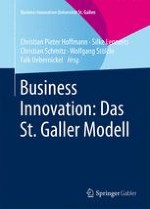2016 | OriginalPaper | Chapter
14. The Innovation Process: Sparking Creativity by Cross-Industry Analogies
Authors : Marco Zeschky, Prof. Dr., Oliver Gassmann, Prof. Dr.
Published in: Business Innovation: Das St. Galler Modell
Publisher: Springer Fachmedien Wiesbaden
Activate our intelligent search to find suitable subject content or patents.
Select sections of text to find matching patents with Artificial Intelligence. powered by
Select sections of text to find additional relevant content using AI-assisted search. powered by
